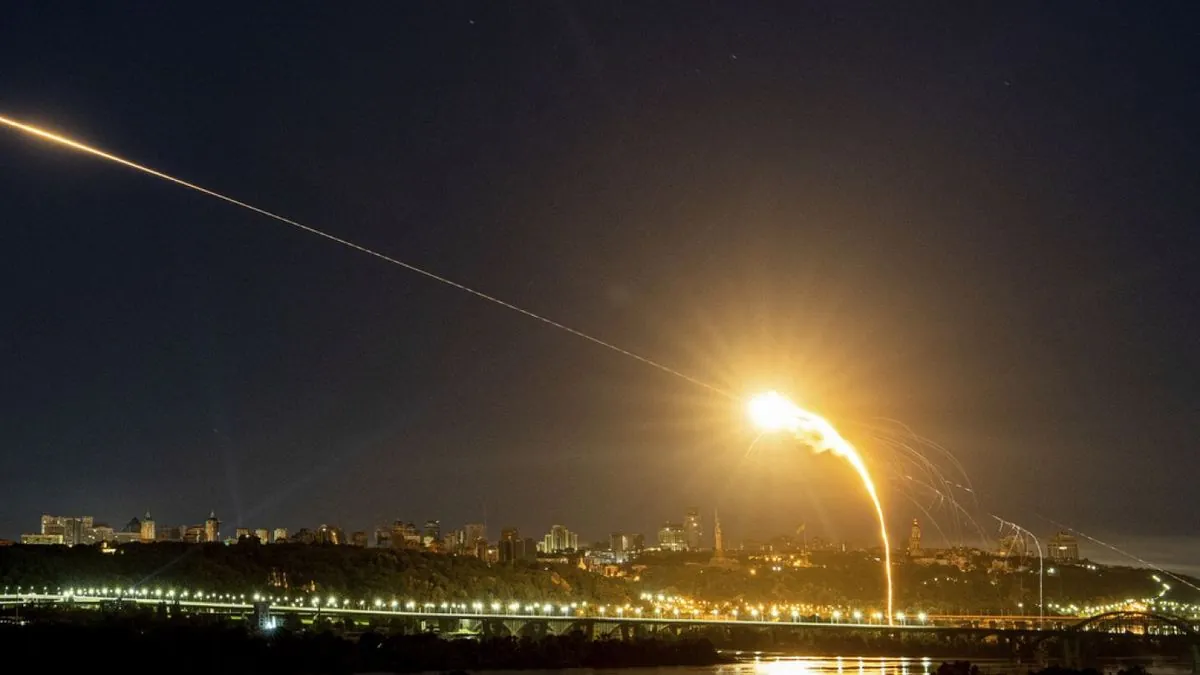In a significant escalation of the ongoing conflict, Ukrainian forces successfully repelled a large-scale Russian drone assault targeting 15 regions across the country. The attack, which occurred on October 3, 2024, marks another chapter in the 2-year and 7-month-long full-scale invasion that has reshaped geopolitical dynamics and caused widespread destruction.
According to Ukrainian military officials, their air defense systems managed to neutralize 78 out of 105 Russian drones during the overnight assault. This impressive feat highlights the growing effectiveness of Ukraine's air defenses, which have been significantly bolstered by Western aid over the course of the conflict. The remaining drones were likely impacted by active electronic jamming, showcasing the increasing importance of electronic warfare in modern conflicts.
The attack resulted in damage to energy infrastructure and residential buildings across several regions. The Ukrainian Energy Ministry reported disruptions to power lines and substation equipment in Kyiv, Odesa, and Ivano-Frankivsk regions. These targeted strikes on energy facilities have been a recurring strategy employed by Russian forces since October 2022, aimed at weakening Ukraine's resilience and infrastructure.
In the southern Odesa region, a crucial Black Sea port city vital to Ukraine's economy, the drone assault caused temporary disruptions to railway services and power cuts for thousands of households. Oleh Kiper, the regional governor, stated that power had been restored to over 3,000 consumers, though 2,000 people remained without electricity.
The capital Kyiv and its surrounding areas were not spared from the attack. Local authorities reported downing approximately 15 drones over the region during an air alert that lasted more than five hours. This persistent targeting of Kyiv underscores the strategic importance Russia places on pressuring the Ukrainian leadership and population.
In response to these continued attacks, Ukraine has intensified its calls for Western allies to lift restrictions on the use of long-range weapons. This plea comes as Russian forces continue to make steady progress on the eastern front, putting additional pressure on Ukrainian defenses.
Demonstrating its growing military capabilities, the Ukrainian military announced the use of ATACMS (Army Tactical Missile System) ballistic missiles, provided by the United States, to strike a Russian Nebo-M radar station. This sophisticated radar system, capable of detecting stealth aircraft, plays a crucial role in Russia's air defense network. The strike aimed to reduce Moscow's ability to "detect, track and intercept" ballistic targets, potentially shifting the balance of air superiority in the region.
The conflict continues to have far-reaching consequences beyond the immediate battlefield. It has triggered Europe's largest refugee crisis since World War II, caused global economic disruptions in energy and food markets, and led to increased military spending across Europe. The International Criminal Court's issuance of an arrest warrant for Russian President Vladimir Putin further complicates diplomatic efforts to resolve the conflict.
As winter approaches, concerns grow about potential intensified attacks on Ukraine's energy infrastructure, reminiscent of the severe damage inflicted during the winter of 2022-2023. The international community remains watchful as both sides continue to employ increasingly sophisticated weaponry and tactics in this protracted conflict.
[[Ukrainian Air Force Spokesperson]]
"Our air defense forces have shown remarkable efficiency in countering the latest drone assault. However, we must remain vigilant as the enemy continues to adapt their tactics."
This ongoing war, now in its third year, has not only reshaped the geopolitical landscape but also highlighted the critical role of advanced military technologies and international support in modern warfare. As Ukraine continues to defend its sovereignty, the global implications of this conflict continue to unfold, affecting everything from international relations to global economic stability.
